U-166 in the Gulf
After the U-boat slaughter of May 1942, a convoy system was put in place for Allied merchant vessels in the Gulf of Mexico in an attempt to bring an end to the German offensive known as Operation Paukenschlag (Drumbeat). Although the threats on Allied vessels were lessening towards the end of July 1942, U-boats were still active in the Gulf. One of at least ten U-boats still on the prowl in the summer of 1942 was U-166, under the command of Oberleutnant zur See Hans-Günther Kuhlmann. After laying mines near the mouth of the Mississippi River and sinking three American vessels (the SS Carmen, SS Oneida, and SS Gertrude on June 11th, 13th, and 16th respectively), U-166 had an encounter with American vessels seventy years ago today, on 30 July 1942, that ended in tragedy.
On 30 July 1942, the SS Robert E. Lee was en route from Trinidad to New Orleans with 270 passengers escorted by the naval vessel, PC-566. Near Tampa, the captain tried to bring the ship into harbor, but was forced to continue on to New Orleans because of the lack of a harbor pilot. The Robert E. Lee was carrying additional passengers, survivors of U-boat attacks on the Norwegian motor tanker, Andrea Brøvig and the Panamanian steam tanker, Stanvac Palembang. Only twenty-five miles south of the mouth of the Mississippi River, the Robert E. Lee was hit by a single torpedo from U-166. Most of the passengers were able to squeeze onto the sixteen life rafts and six lifeboats. As the ship went down, Kuhlmann surfaced U-166 and shouted to the survivors, apologizing and wishing them luck (a practice that had been seen before). As the U-166 dove under the surface, PC-566 dropped depth charges, in hopes of hitting the U-boat. Ten crewmen and 15 passengers were lost aboard the SS Robert E. Lee. One of the crew killed aboard the Robert E. Lee was a female mariner from New Orleans, Winifred Grey.
Although it was not immediately clear if U-166 had been hit by the depth charges, indeed the retaliatory attack by PC-566 was successful; U-166 was lost, resulting in the deaths of all 52 members of the submarine crew. The location of the wreckage of the Robert E. Lee had long been identified, close to the site of the U-boat attack, 45 miles from the mouth of the Mississippi. But it wasn’t until 2001 that BP and Shell discovered the wreckage of the U-166, close to that of the Robert E. Lee. After the vessel was located, a film crew documenting the discovery of the U-boat learned from Kuhlmann’s widow of the existence of a large collection of images from Kuhlmann’s service. She subsequently donated this material to The National WWII Museum through the PAST Foundation. More information can be found here. A selection from the material gifted by Kuhlmann’s widow can be seen below. It provides a rare and fascinating glimpse into the private life of an often demonized enemy.
- Hans-Günther Kuhlmann.
- Hitler appeared at a ceremony for new officers including Kuhlmann, on 17 January 1939.
- June 1940 wedding announcement for Kuhlmann and Gertrude Wree.
- Kuhlmann and his bride after the wedding ceremony.
- Promotion certificate for Kuhlmann signed by Erich Raeder.
- Condolence letter from March 1943 listing Kuhlmann's death as having occurred in the Caribbean on 3 August 1942.
- Condolence letter from November 1942 from the Guenther Kuhnke, Commander of the 10th U-boat Flotilla, which explains that the fate of her husband is unknown.
Post by Curator Kimberly Guise.


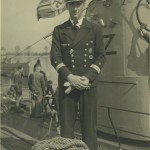
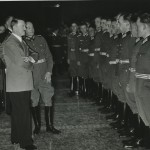


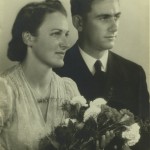

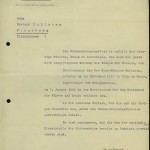
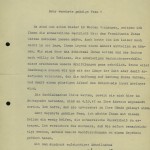



Leave a Reply